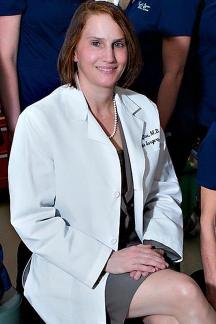Loftus Plastic Surgery Center
Natural Results from a National Expert
Right Here In Cincinnati and Northern KentuckySchedule a
Consultation
513-793-4000
859-426-5000
Breast Reduction Info
Symptoms, Solutions, Surgery, Preparation, Recovery, and Tips
Women and girls as young as 14 can have a breast reduction, provided their breast size has been stable for 12 months.Symptoms of Macromastia (Large breasts)
Large breasts can cause a multitude of problems, including neck, back, and shoulder pain, headaches, shoulder-grooving (where the bra-straps dig in), postural problems (which contribute to upper extremity nerve problems), interference with activities and exercise, rashes under the breasts, inability to find clothing that fits properly, and problems with self-image. As a result, women with large breasts are often in chronic pain, have little energy, may be overweight because they are unable to exercise, and have self-image problems, all of which interfere with quality of life.Possible Solutions to the Problem of Large Breasts
Weight loss and exercise are usually suggested (if not required) by insurance companies prior to approval for breast reduction surgery, but often futile. Weight loss, even if successful, usually does not alleviate the symptoms of macromastia. Many women are unable to exercise because of the large breasts themselves – hence, a catch-22. Aspirin, Tylenol, Ibuprofen, and other medication may benefit some, but usually their effect is limited. Powders may reduce your chance of developing a rash in hot weather. Chiropractic care is of limited help, particularly in cases involving significantly large breasts. Invariably, breast reduction surgery is the most effective, most efficient, and most successful way to treat the problem of macromastia.Breast Reduction Surgery (Reduction Mammaplasty)
Breast reduction is an operative procedure in which breast tissue and excess breast skin are removed. The removal of breast tissue results in a smaller breast. Removal of excess skin results in a breast that is higher on the chest wall and more aesthetic. This is an important component of this operation, because it allows the breast to be restored to a youthful appearance and shape. If excess skin were not removed, the breast would actually look worse following breast reduction than before surgery. So, think of a breast reduction as a breast lift in which your breasts are also made smaller.During your breast surgery, your nipples will be moved to a higher position on your breasts. This is usually accomplished WITHOUT removing your nipples and putting them back on. The technique plastic surgeons use to accomplish this is called transposition, in which the nipple stays fully attached to the breast – only the surrounding skin is moved. Because the nipple preserves its attachment, most women retain (or improve) nipple sensation, the ability to attain an erect nipple, and the ability to breast feed.
Women who have such markedly large breasts that attempted preservation of the nipple can threaten the entire operation may be advised to have a free-nipple breast reduction. In this operation, the nipple IS actually removed at the beginning of the operation and placed on at the end of the operation as a graft. But this is uncommon. Nipple sensation, appearance, and function (breast feeding) will be forever altered, but this is sometimes the best option for women whose breasts are so large that other operations would pose too great of a risk. Once again, this technique of free-nipple grafting is not nearly as common as the techniques which involve preservation of the nipple.
Preparation and Recovery from Breast Reduction Surgery
Anesthesia: GeneralLocation of operation: Surgery Center or hospital.
Length of surgery: 2-3 hours
Length of stay: Overnight or Out-patient
Discomfort: Moderate. Anticipate 3-7 days of prescription pain medication. This can be reduced through the use of long-acting local anesthetics used by your surgeon at the time of surgery.
Swelling and Bruising: Improve in 1-2 weeks.
Bandages: If bandages are used, they will be removed in 1-3 days.
Stitches: Will be removed in 5-7 days or will be absorbable. Most plastic surgeons use stitches which absorb, so removal is not required.
Support: You will wear a sports bra or ace wrap for 1-4 weeks. Avoid an under wire bra until your surgeon approves it.
Back to work: 1-2 weeks.
Exercise: May be resumed in 2-4 weeks.
Final result: Will be seen after the scars have matured, which will take about 1-3 years.
Tips on Breast Reduction
- Probably the very best tip is that if you have large symptomatic breasts, don’t put off having a breast reduction. Most women site procrastination as their main regret of this operation.
- If your insurance company does not cover this operation, do not despair. You may always choose to have it performed as a fee-for-service procedure (meaning that you pay out of pocket). In fact, many women find that the cost of having breast reduction without insurance is the same as having it with insurance. You read that correctly. This is because of high deductible fees on most plans. See our costs here.
- Wait until you are finished child-bearing before having a breast reduction if possible. Although this is not mandatory, pregnancy may cause breast enlargement or droop, which may in turn send you back to your plastic surgeon for another procedure. If you are able to wait until you are finished having children, you may be able to avoid this. On the other hand, young women with symptomatic macromastia who do not intend o have children for several years may appropriately choose to proceed with a breast reduction at a young age, as deferring it can take a different toll. So, in general, Dr. Loftus recommends that if you are planning to have children within a few years, hold off on the breast reduction until you are finished. If child-bearing is finished or a long ways off, then do proceed with a breast reduction.
- Ask your plastic surgeon to use long-lasting local anesthetic at the time of your operation to reduce your post-operative discomfort.
- Ask your plastic surgeon if he/she can use absorbable sutures so that they do not require removal.

About Dr. Loftus
Dr. Loftus is a female plastic surgeon who is considered a national authority on plastic surgery, having appeared on numerous talk shows as an expert. Her book has become a best-selling book on plastic surgery and has earned her the reputation as a vocal advocate of patient safety, satisfaction, and education in plastic surgery. No wonder her patients have such great things to say about her…

| My results are amazing - Dr. Loftus is amazing! |
Reviews on Loftus Plastic Surgery Center
TV Appearances of Dr. Loftus
Cincinnati: The Christ Hospital2139 Auburn Avenue, Suite 201
Cincinnati, OH 45219
(513) 793-4000
View Map
Cincinnati, OH 45219
(513) 793-4000
5 minutes from downtown Cincinnati,
At the Christ Medical Office Building
At the Christ Medical Office Building
View Map
Northern Kentucky1881 Dixie Highway, Suite 300
Fort Wright, KY 41011
859-426-5000
View Map
Fort Wright, KY 41011
859-426-5000
3 minutes from downtown Cincinnati &
visible from I-71/75
visible from I-71/75
View Map






